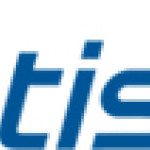- 産業: Telecommunications
- Number of terms: 29235
- Number of blossaries: 0
- Company Profile:
ATIS is the leading technical planning and standards development organization committed to the rapid development of global, market-driven standards for the information, entertainment and communications industry.
Any material substance, such as fiber-optic cable, twisted-wire pair, coaxial cable, dielectric-slab waveguide, water, and air, that can be used for the propagation of signals, usually in the form of modulated radio, light, or acoustic waves, from one point to another. Note: By extension, free space can also be considered a transmission medium for electromagnetic waves, although it is not a material medium.
Industry:Telecommunications
Any military action involving the use of electromagnetic and directed energy to control the electromagnetic spectrum or to attack the enemy. The three major subdivisions within electronic warfare are: electronic attack, electronic protection, and electronic warfare support.
Industry:Telecommunications
Any mobile terminal, mobile station, personal station, or personal terminal using non-fixed access to the network.
Industry:Telecommunications
Any network-based software system that uses client software to request a specific service, and corresponding server software to provide the service from another computer on the network.
Industry:Telecommunications
Any nonequatorial orbit of a satellite. Note: Inclined orbits may be circular or elliptical, synchronous or asynchronous, and direct or retrograde.
Industry:Telecommunications
Any notation that uses two different characters, usually the digits 0 and 1. Note: Data encoded in binary notation need not be in the form of a pure binary numeration system; e.g., they may be represented by a Gray code. 2. A scheme for representing numbers, which scheme is characterized by the arrangements of digits in sequence, with the understanding that successive digits are interpreted as coefficients of successive powers of base 2.
Industry:Telecommunications
Any notation that uses two different characters, usually the digits 0 and 1. Note: Data encoded in binary notation need not be in the form of a pure binary numeration system; e.g., they may be represented by a Gray code. 2. A scheme for representing numbers, which scheme is characterized by the arrangements of digits in sequence, with the understanding that successive digits are interpreted as coefficients of successive powers of base 2.
Industry:Telecommunications
Any of a number of equipment interfaces compliant with voluntary industry standards developed by the Electronic Industries Association (EIA) to define interface parameters. Note 1: Some of the EIA interface standards have been adopted by the Federal Government as Federal Standards or Federal Information Processing Standards. Note 2: The telecommunication-standards-developing bodies of the EIA are now part of the Telecommunications Industry Association (TIA,) and the standards are designated TIA/EIA-xxx.
Industry:Telecommunications
Any of a number of hard materials, such as aluminum oxide, silicon carbide, and diamond, that are powdered and carefully graded according to particle size, and used to shape and/or finish optical elements, including the endfaces of optical fibers and connectors. Note: For finishing the endfaces of optical fiber connectors, abrasive particles are adhered to a substrate of plastic film, in a fashion after that of sandpaper. The film is in turn supported by a hard, flat plate. The connector is supported by a fixture that holds it securely in the proper position for finishing. The grinding motion may be performed manually or by a machine.
Industry:Telecommunications
Any of several types of attribute certificates containing information used in the authorization process. Note: Authorization information may also be contained in a public key certificate, in which case that public key certificate also serves as an authorization certification.
Industry:Telecommunications
